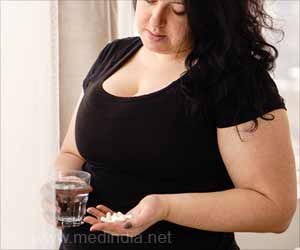The pain may sometimes spread to the testicles (testes) and anus (while passing stools). Other symptoms include lower urinary tract symptoms, psychological issues, and
(anxiety, stress, and dyssynergic voiding) that lead to poor quality of life.
to produce relief from various ailments.
The technique is extensively used to relieve pain. It is now spread to various parts of the world and approximately more than 3 million Americans now use acupuncture.
Study Design
The present study was a multicenter randomized trial of 20 sessions of acupuncture over 8 weeks at the China Academy of Chinese Medical Sciences to assess the long-term efficacy of acupuncture for improving symptoms of CP/CPPS.
Almost 440 male participants were given either acupuncture or sham therapy (220 in each group). Clinically effective treatments were marked by a reduction of at least 6 points from baseline at 8 and 32 weeks on the National Institutes of Health Chronic Prostatitis Symptom Index.
Evidence-Based Trial
The study found a greater improvement in moderate to severe chronic prostatitis/chronic pelvic pain syndrome (CP/CPPS) symptoms when compared with sham therapy (placebo therapy – an inactive treatment or procedure that mimics the actual therapy in a clinical trial).
The participants did not demonstrate any significant differences in the International Index of Erectile Function 5 score at all assessment time points or in peak and average urinary flow rates at week 8.
Moreover, the treatment was found to be efficient over 24 weeks during follow-up. Both the trial and placebo groups did not inscribe any adverse events.
Acupuncture and Chronic Prostatitis
The conventional mainstays of treatment for CP/CPPS involve antibiotics, a-blockers, and anti-inflammatories. However, the effects are limited and often result in adverse events with long-term use.
The rigorously conducted study data thereby illustrates that acupuncture may be an efficacious treatment option for CP/CPPS. The authors add that the long-term efficacy of acupuncture may implement high-quality evidence for clinical practice of the technique and guideline recommendations.
Although acupuncture has shown promising results as an alternative treatment. However, accurate evidence on the potency of the technique remains confined.
Facts on Acupuncture
- There are approximately 300 acupuncture points on the body right from head to toe.
-
Acupuncture is a highly patient-centered and individualized medicine that differs based on physical and mental-emotional levels. -
Acupuncture points are known to be connected by the acupuncture meridian system. - Did you know that acupuncturists note your pulse rate by looking at your tongue?
- Acupuncture was introduced in the US in only the early 1970s.
- Acupuncture is more like preventative medicine and involves correcting the root cause of the problem.
- The original ancient acupuncture “needles” were made of sharpened stones, bamboo, or bone.
- However modern-day acupuncture needles are thinner than a strand of hair so that they don’t hurt.
-
The World Health Organization published a clinical review of acupuncture trials in 2003 that endorses its use for over 200 symptoms and diseases.
References:
- Efficacy of Acupuncture for Chronic Prostatitis/Chronic Pelvic Pain Syndrome
– (https://www.acpjournals.org/doi/10.7326/M21-1814) - Prostatitis – (https://www.mayoclinic.org/diseases-conditions/prostatitis/symptoms-causes/syc-20355766)
- Acupuncture: In Depth
– (https://www.nccih.nih.gov/health/acupuncture-in-depth)
Source: Medindia



